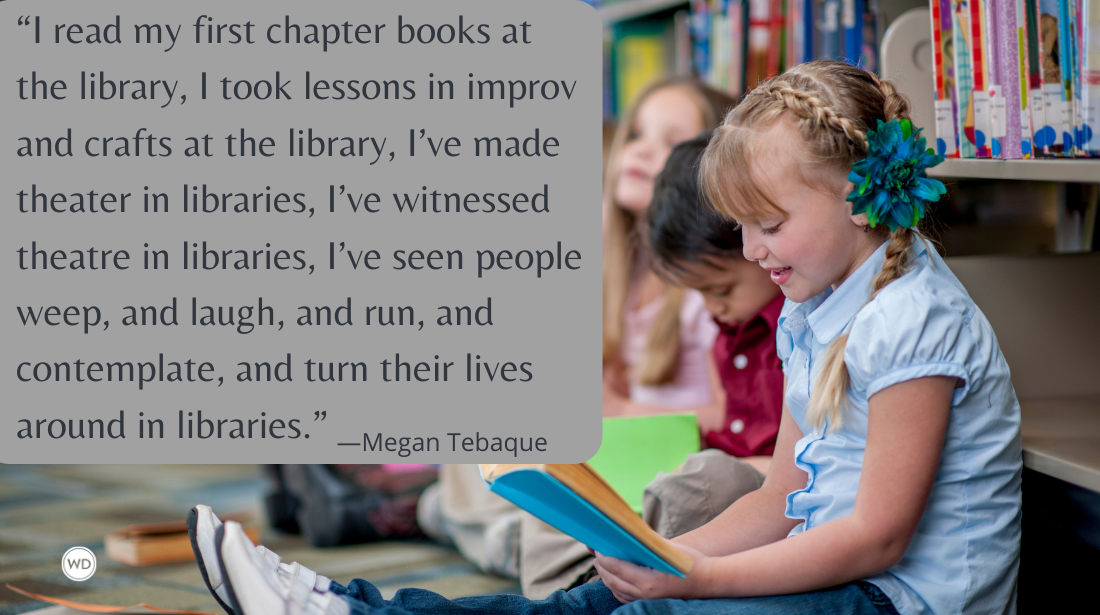Write What You Know and Ask “What If?”
Writing what you know is not necessarily the same thing as writing your personal experiences. Young adult author Nikki Barthelmess discusses how to write what you feel as a way to write what you know, and to ask “what if?”
As an author, I’m lucky to have many supportive friends and family members who are interested in my novels. But if I had a book sale for every time someone called one of my main characters my name or explained something they like in the premise by saying “When you did” whatever it is they assume my fictional character will engage in during the story, I’d be swimming in piles of money.
When this happens, I calmly explain that my novels are not based on my life. Instead, I take feelings and experiences I’ve had and use them as a jumping-off point to imagine new scenarios and characters. Maybe it would be easier if I lied and encouraged these people to buy more books to find out every sordid detail of my past. But I won’t. Because I’m an author. A fiction writer. I have no interest in publishing a memoir, at least not yet.
Frustrating as these scenarios are, I get it. Victoria—the protagonist of my debut novel, The Quiet You Carry—is a teenager thrust into foster care after being abused by her father. My dad hurt me, too, and after he went to jail when I was 12 (for something unrelated, coincidentally), I spent the next six years being bounced around from foster home to foster home.
The main character of my latest book, Everything Within and In Between, Ri Fernández, has light skin. Her dad, who she never knew, is white, and her mom, who left when Ri was little, is a first generation Mexican American. Ri struggles growing up around her grandma, an immigrant who wants Ri to identify only as Caucasian to make her life easier. Ri doesn’t know where she fits in because she doesn’t speak Spanish and feels the outside world sees her as white.
IndieBound | Bookshop | Amazon
[WD uses affiliate links.]
I’m a mixed Latina, too. My grandparents on my mom’s side are Mexican immigrants and my dad’s family is Jewish. Because of my light skin, the world hasn’t seen me as a Mexican or Mexican American like my family. And growing up, I had difficulty being perceived in a way that didn’t feel authentic to who I was, hearing bigoted comments from people who thought they were talking to someone like them, or witnessing racism happen to people who, like some of my relatives, have darker skin or other features that identify their ethnicity.
But I am not Victoria or Ri, and my main characters are not based on me.
Writers hear all the time this sage piece of advice: Write what you know. But to me, that doesn’t necessarily mean writing my life story. Each time I set out to create something new I endeavor to write the story only I can. I consider the places, the concepts, and—yes—the experiences that matter to me. And I start to imagine. I create my main characters by asking myself, “What if?”
For my first book, The Quiet You Carry, I took some basic things from my past. As a child, I felt embarrassed about being in foster care. I wanted to keep it a secret at school, but I couldn’t. The bus dropped me off every day on the hill in front of the Tyson’s house, a couple who was well known in this tiny town for taking in foster kids. One kid loudly asked what I’d done wrong to end up as one of the Tyson Girls. “Why didn’t your parents want you?” To this day, I shudder when I remember the humiliation I felt in that moment.
Years later, I wanted to write a novel that told the story of kids like me who ended up in foster care by no fault of their own but were judged, blamed, and treated like they were less than others because of it. So, I asked myself some questions. What if someone could have kept their foster care status a secret? And I added things. I worried about protecting my younger brother from foster parents and social workers who mistreated us. That concern made me want to explore Victoria trying to protect her younger stepsister from an abusive parent at home. And from there, I imagined a new person who had different circumstances than mine, but some similar challenges.
Likewise, Everything Within and In Between is about Ri’s journey of self-discovery but it was also mine. I took my sadness and shame at not speaking Spanish well and made it part of the way Ri tries to reconnect with her absent mom and with her heritage. Growing up, I got the impression that some of my Mexican family members wanted to assimilate. I got compliments on my light skin, wasn’t encouraged to learn Spanish, and was often reminded that I was an American and that I was white.
My mom didn’t disappear without a trace when I was young like Ri’s did, but she did die of colon cancer. Immersing myself around the Spanish language and Mexican culture felt like a way to connect with her, as well as my extended family, many of whom I had lost touch with later in life. So, I started practicing my Spanish more with my abuelita (and later I signed up for a college class) to learn more. And I wrote. When I started imagining Everything Within and In Between, again I asked myself some questions. What if someone wanted to get to know their mom and culture by learning Spanish but had to keep it a secret from their family?
The more changes I made to some of these situations that started off like mine, the more the story and characters took on a life of their own.
Writing what you know doesn’t have to mean writing your life story. But it can mean writing the feelings you’ve had—and yes, maybe some experiences—and using them to make authentic characters with meaningful journeys that readers can relate to and that will resonate with them. That’s what I’ve tried to do, to use my colorful, chaotic, traumatizing but sometimes beautiful background and weave it into a novel. And who knows? Maybe the next family friend at a dinner party who doesn’t believe me will get reimagined into my next book.
Nikki Barthelmess is an author of young adult books, including The Quiet You Carry, Quiet No More, and Everything Within and in Between. While growing up in foster care, Nikki found solace in books and writing. A former journalist, Nikki lives in sunny Santa Barbara with her husband, daughter, and diva of a corgi. When not reading or working on her books, Nikki loves advocating for the rights of current and former foster youth, jogging near the beach, and trying to convince her abuelita that feminism means it’s okay that her husband does all the cooking.








